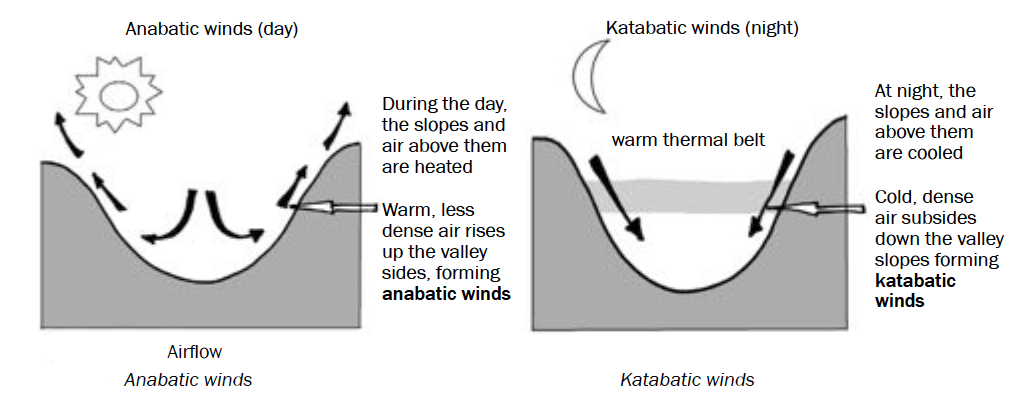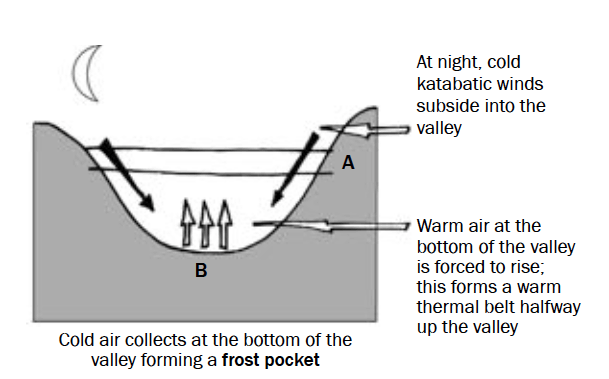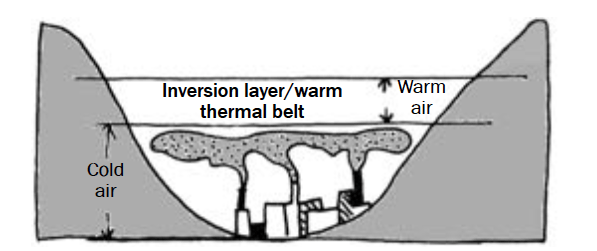
South Africa - A Case Study - Climate 2 - Valley and City Climates (Booklet page 16)
Valley climates occurs on a local scale and lasts for a few hours. In this section we will focus on:
• Anabatic and katabatic winds
The structure of a valley, and the heating and cooling that occurs during a day cause anabatic and katabatic winds to occur.
Here's a picture of these types of winds.

On the left hand side, during the day, the slopes and the air above those slopes are heated.
Warm air, which is less dense, rises up the ides of the valley, and that rising air is called an anabatic wind.
So, anabatic winds happen in the daytime only.
On the right, the picture shows Katabatic winds.
Katabatic winds happen in the night time.
The slopes, which were heated in the daytime, become cooled.
Cooler, denser air floats down the sides of the valleys; and that floating air is know as a katabatic wind.
Naturally, any movement of air, whether the winds are strong or not, has an effect on the local environment.
Anabatic winds, by coincidence, take pollution out of the valley.
It's a coincidence because those valleys and winds have been there a long long time; far longer than settlements which cause pollution.
Anabatic winds therefore tend to be beneficial (good) for the local environment.
On the other hand, katabatic winds trap pollution in the valleys.
Any pollution the anabatic winds haven't cleared stays in the valley and isn't blown out.
The katabatic winds also bring cooler or even cold temperatures into a .valley at night.
Katabatic winds create a thermal belt (a horizontal area of warmer temperatures above the valley floor) and also a frost pocket (an area of cold temperature on the valley floor).
Frost is when the moisture on the ground freezes. It can make ice on the floor, on the roads where there is moisture and slippery surfaces. (Below.)

And this picture shows how the thermal belt traps pollution.

The effects of warm thermal belt on settlement and farming
• People will build their houses halfway up the slope of a valley to be in the warmer thermal belt (point A on the first picture).
• Crops which need warm, frost-free conditions will be planted in the thermal belt, for example sugar cane (point A on the top picture).
The effects of frost pockets on settlement and farming
• Crops which can withstand cold conditions (such as frost) can be planted at the bottom of the valley, for example potatoes (point B on the top picture).
• Pollution is trapped in the cold air below the temperature inversion at night, as shown on the bottom picture.